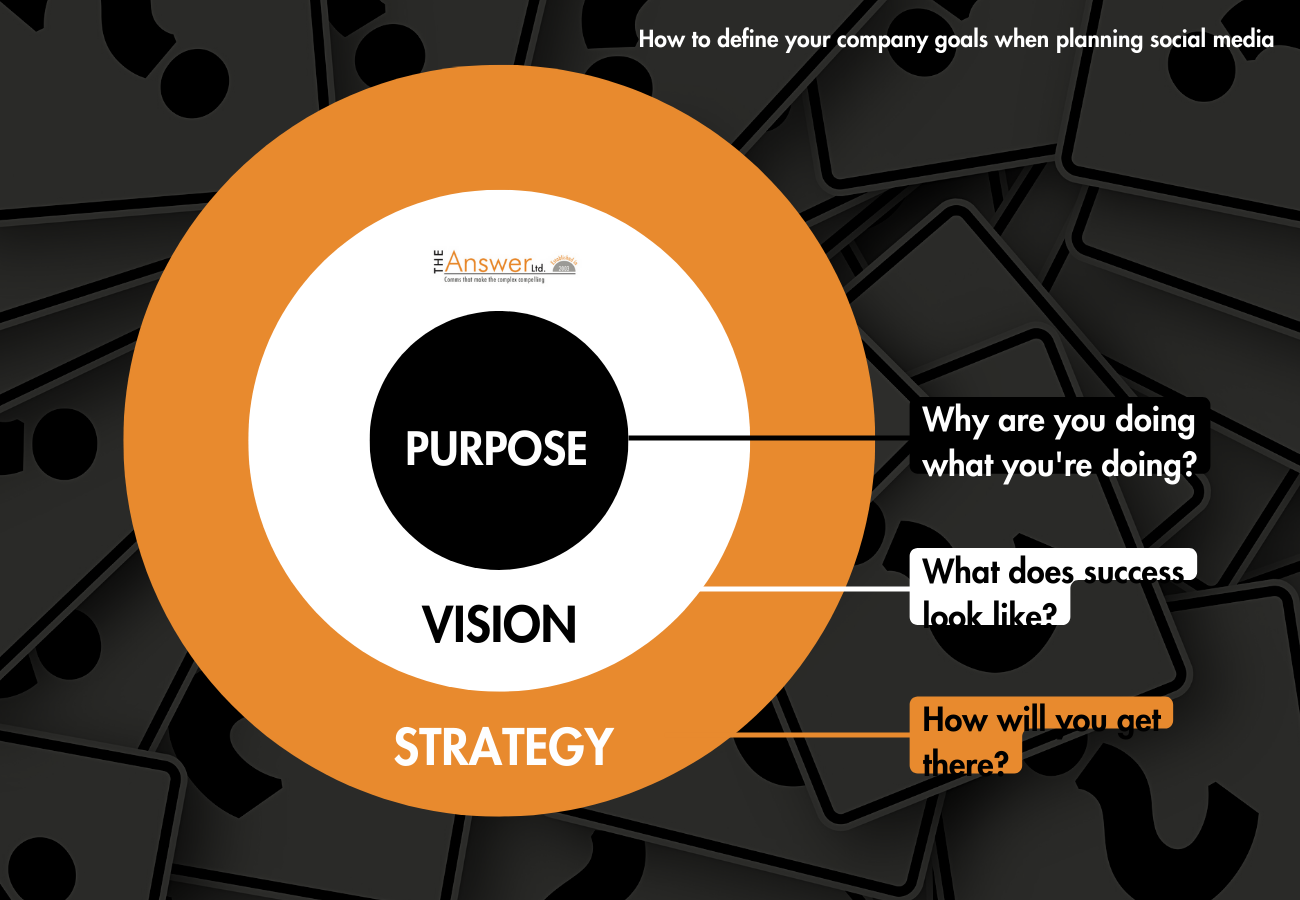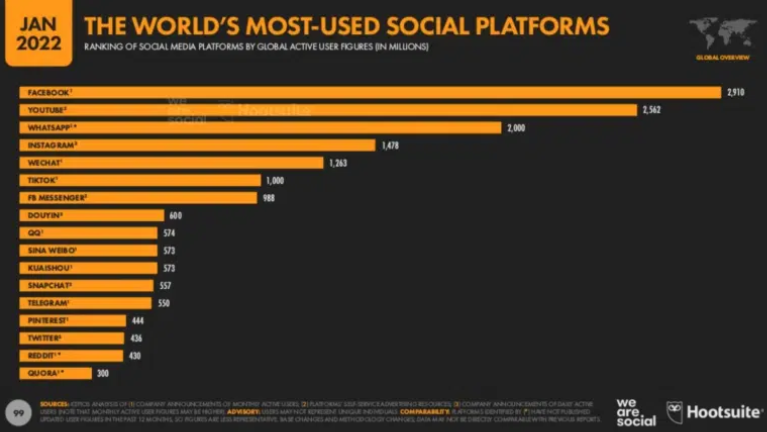How to create social media content for complex businesses

Choosing the right channel, and the right content, for effective social media messaging in complex businesses.
Wondering where to start on how to manage social media for your business? The team at TheAnswer Ltd have come to your rescue.
Social media is an ideal marketing channel as not only is it free but it allows businesses to communicate campaigns directly to their audience with no middle-man. The marketing team can better control the message, meaning they can interact with their audience and create conversations in real-time.
In this blog, we’ll share our guidance on how to manage social media in 4 easy steps. This will help you better plan your social media strategy effectively for maximum impact, and review performance.
STEP 1: Choose the right social media channel for your business
Define your company goals
If you are looking to communicate your brand and company information across social media, you’ll firstly need to take a look back at your goals. Social media aligns very closely with your strategy and companies with complex messaging may need more thought and tailoring, hence why this step is important. Why are you doing what you’re doing? What does success look like? How will you achieve it?

Research your audience
If you are running social media for a complex business, you’ll then need to choose which channels could work best. The way to do this is to think about your audience and tap into any existing reports you have. What are some core demographics? How do they like to communicate? Where do they find information? Which channel are the most highly engaged on? Once you have the answers to these questions, it will help you build a profile.
Choose your channels
Facebook: Facebook is the world’s biggest social media channel, currently hosting 2.93 billion monthly active users. This platform is used by all ages and is great for sharing company updates, events, and live stories.
Twitter: Twitter is best for quick updates, regular posts and news. Many charities and not-for-profit organisations use Twitter for running campaigns and spreading the word quickly about their activities and drive awareness about their mission.
Instagram: Instagram is by far the most visual platform heavily driven by photo and video content. The engagement rate is very high so if your company is seeking to connect with audiences and invest the time needed in creating this content, Instagram is a powerful tool.
LinkedIn: Linkedin is centred around professional networking around careers, education and development. Popular for B2B, this could be an ideal tool if you’re looking a business seeking to engage with other businesses.
TikTok: TikTok is the fastest-growing platform and focuses on video content and is a good option if trying to reach younger audiences or have a B2C brand. Short 15-60 second video clips can help promote non-profit goals by raising awareness and funds for campaigns.
Our recommendation: Use Linked (the biggest platform in terms of professional users) as a starting point to create your free company page and reach a wider audience.

Source: https://blog.hootsuite.com/social-media-demographics/
More info on how to define your target market: https://blog.hootsuite.com/target-market/
STEP 2: Create content that resonates with your core audiences
There is an enormous variety of different types of content that can be shared across social media.
- News articles and blogs
- Images and galleries
- Infographics
- Animations and GIFs
- Free downloadable PDFs and research Whitepapers
- Testimonials
- Employees bios and customer case studies
- Events and webinars
Each post should contain text, a URL image/ video and hashtags. Many of the visuals are pulled from the URL however each platform has different sizes for content if you wanted to create this yourself. Sprout social has an excellent guide that’s regularly kept up-to-date.
Our recommendation: Work with a trusted graphic designer - one who really gets your brand and who has the skills to create social media and items for print. At TheAnswer we have design skills on tap for our clients.
STEP 3: Set up a social media content calendar
The world of business like yours can be dynamic, ever-changing and complex, which means you have to plan ahead and stay organised. The most important thing to remember when posting on social media is to be consistent, and a good content calendar will help you do just that.
Our recommendation: No matter what your industry there will be key markers throughout the year, as well as your own internal special days. For example: tax filing deadlines, your company’s anniversary, attendance at a key trade show… In addition to that it’s important to keep an eye on key market trends and news so that you can comment and add your opinion on key news and developments.
STEP 4: Analyse and review
Once the research, planning and posting has commenced, set aside some time to review the performance of your social media channels. Depending on the size of your company and volume of your posts, you can review every 3 months by exporting reports from your social media profile. These will tell you how many impressions, clicks and comments your posts have had.
Our recommendation: The operating environment for complex businesses is ever-changing, set a calendar reminder to review your content every week to ensure the message is within context.
At TheAnswer we’ll handle this for you!
Looking for advice on how to position your social media messaging? Get in touch today to see how TheAnswer Ltd can work with you to help.
